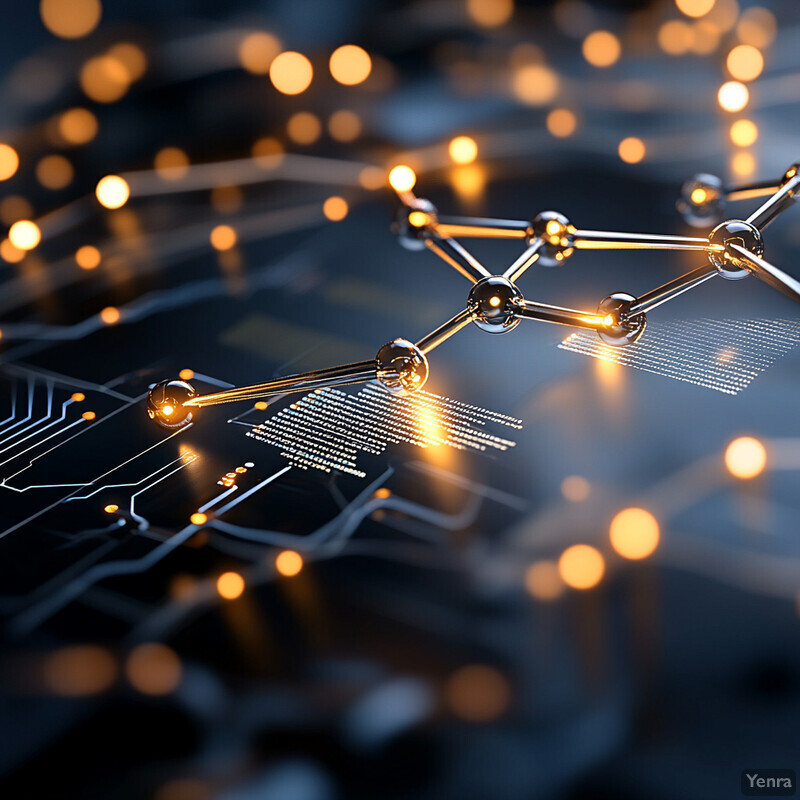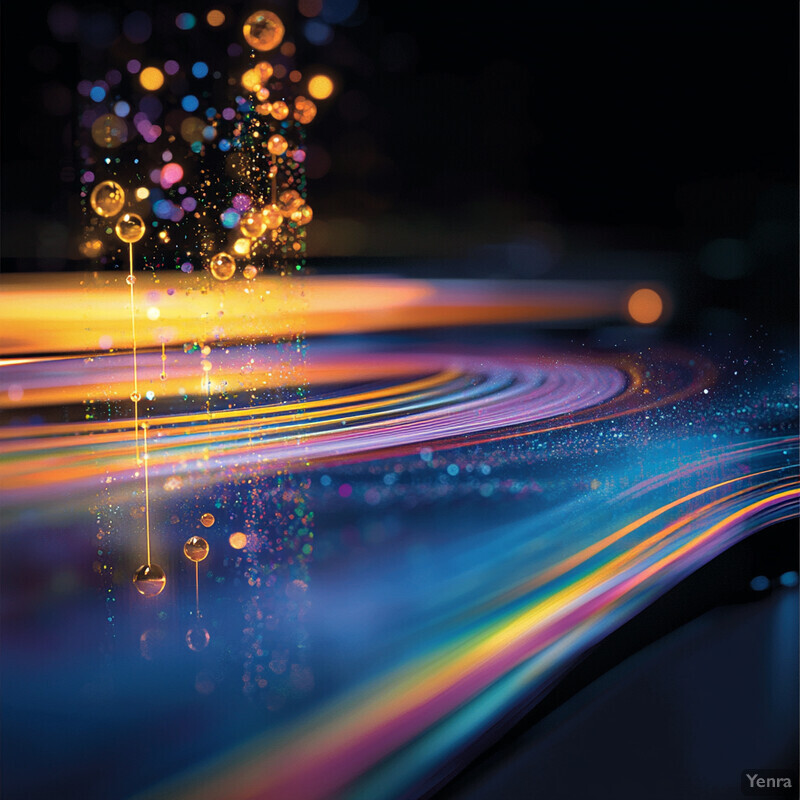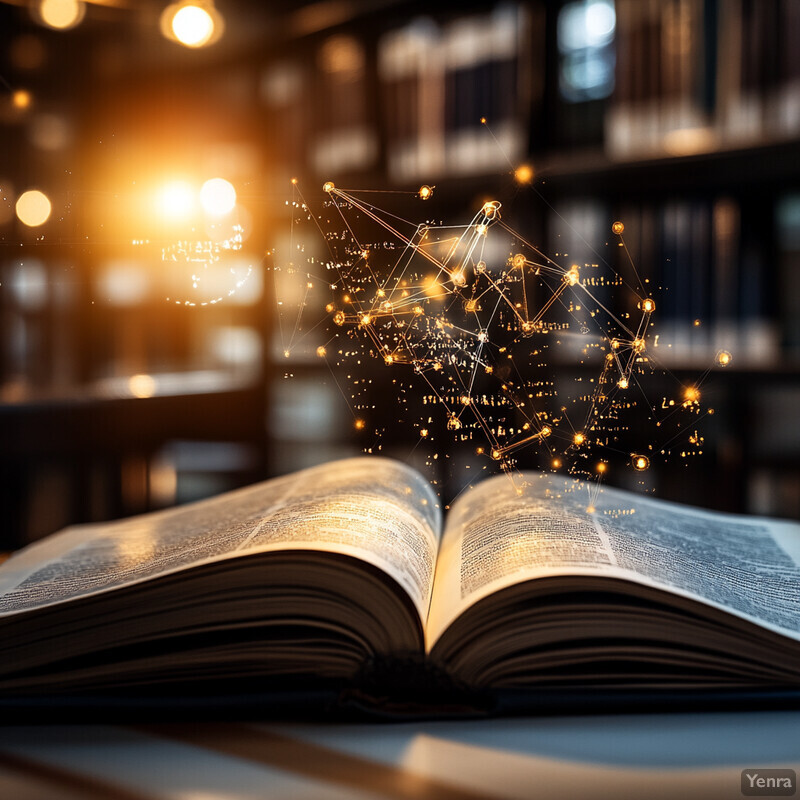1. High-throughput Virtual Screening
Machine learning enables screening of large virtual libraries of catalysts to identify promising candidates rapidly. By evaluating thousands of hypothetical structures in silico, researchers can narrow down options before any lab work. This accelerates discovery and reduces bias from human intuition. For example, AI models have screened spinel oxides and alloys to flag top performers in water-splitting and CO2 reduction. The approach shifts chemist effort toward the most promising regions of chemical space. Overall, high-throughput virtual screening turns a laborious trial-and-error process into a fast, data-driven prioritization step.

Automated virtual screening has led to concrete discoveries. Hashemi et al. demonstrated an AI-driven workflow (HiREX) to explore reactivity across virtual libraries of manganese pincer catalysts; they conclude that “automated high-throughput virtual screening of systematically generated hypothetical catalyst datasets opens new opportunities for the design of high performance catalysts”. In one study, a neural network and DFT screening of 6155 spinel oxide catalysts identified 33 candidates with high oxygen-evolution activity; experimental synthesis of a top hit (Co₂.₅Ga₀.₅O₄) showed it matched benchmark catalysts (220 mV @ 10 mA/cm², 56 mV/dec Tafel slope). Similarly, Mok et al. used ML and DFT to predict the activity/selectivity of 465 bimetallic catalysts for CO₂ reduction, discovering previously unknown Cu–Ga and Cu–Pd alloys that were confirmed experimentally to give high formate and C1+ product selectivity. These examples underscore how AI-fueled screening winnows down vast candidate lists to a few high-performance catalysts.
2. Predictive Modeling of Activity and Selectivity
Machine learning models can predict catalytic performance metrics like activity, selectivity, and yield before experiments. By training on existing data (e.g. DFT or experiments), ML models learn the mapping from catalyst composition/structure to output metrics. This lets researchers screen and optimize catalysts virtually. Models have achieved high accuracy (R² ≈0.92) even with simplified descriptors, and can uncover non-obvious active materials. For example, neural nets for hydrogen evolution achieved R²>0.92 and predicted new catalyst candidates. Similarly, ML has been used to predict selectivity distributions, guiding alloy design for specific products. Predictive modeling turns catalyst development into a rational process, saving time and resources compared to purely empirical searches.

Recent studies demonstrate strong predictive power. Wang et al. (2025) built a gradient-boost model for diverse hydrogen-evolution catalysts using only ten key features; it achieved R² = 0.922 and proposed 132 new candidates, several of which showed promising DFT performance. The model also made predictions ~200,000× faster than DFT calculations. In another case, Mok et al. predicted both activity and product selectivity of 465 CO₂RR catalysts; the ML-guided screen revealed new Cu–Ga and Cu–Pd alloys that were experimentally verified to have high selectivity for formate and C1+ products. These concrete examples show that ML models can accurately forecast catalytic outcomes, directing chemists to the most promising leads while quantifying performance metrics beforehand.
3. Automated Mechanistic Insights
AI can automate the discovery of catalytic mechanisms and transition states, which are key to understanding how catalysts work. Machine learning and generative models have been developed to predict transition-state (TS) geometries from reactant structures. By finding lower-energy pathways, these methods can reveal new reaction routes and rate-limiting steps. Such models relieve researchers from manual TS search and provide chemical insight. For example, diffusion-based generative networks learn TS distributions and propose alternative reaction paths with lower barriers. The result is an AI-augmented mechanism exploration that is faster and more thorough than traditional computational chemistry approaches.

New generative ML models show impressive results. Kim et al. (2024) introduced “TSDiff,” a diffusion-model approach that predicts TS geometries directly from 2D molecular graphs (no 3D inputs). TSDiff outperformed prior 3D-dependent methods, identifying “more favorable reaction pathways with lower barrier heights than those in the reference database”. Similarly, Duan et al. (2025) developed “React-OT,” which uses optimal transport to generate TSs. React-OT produced TS structures with median RMSD = 0.053 Å and barrier-height error ~1.06 kcal/mol, and it required only ~0.4 seconds per prediction (roughly 1000× faster than typical ML diffusion models). These tools efficiently compute mechanistic information (TS geometries and energies) across thousands of reactions, enabling automated discovery of catalytic pathways that would be difficult to find manually.
4. Surrogate Modeling for Expensive Computations
Machine learning can act as a fast surrogate for costly simulations (like DFT) by learning to predict their outputs from input structures. Once trained on a dataset of DFT results, the ML model quickly predicts energies or forces for new structures. This accelerates tasks like geometry optimizations or adsorbate-configuration searches. Surrogate models can achieve substantial speedups with only modest loss of accuracy. For instance, ML potentials now find low-energy adsorption geometries over a thousand times faster than DFT. Surrogates thus turn expensive calculations into near-instant predictions, enabling massive virtual studies of catalyst properties and dynamics that were previously infeasible.

Recent results quantify this acceleration. Lan et al. (2023) introduced “AdsorbML,” a machine-learned potential for adsorbate–surface interactions. AdsorbML found the lowest-energy configuration 87.36% of the time, while running ~2000× faster than DFT optimization. In addition, Wang et al. (2025) showed their HER ML model required only 1/200,000 the time of DFT for prediction. Similarly, Duan et al. found that React-OT could generate highly accurate TS geometries “in 0.4 s,” requiring far fewer QM calculations (only 1/7 the normal DFT work) due to its surrogate nature. These findings demonstrate that ML surrogate models retain near-DFT accuracy while slashing compute time by orders of magnitude, thus enabling high-throughput computational catalysis.
5. Inverse Design Approaches
Inverse design uses AI models (often generative networks or optimization algorithms) to suggest catalyst structures that meet target performance criteria. Instead of forward screening, the model is conditioned on desired properties (e.g. high activity, specific selectivity) and generates candidate catalysts. This can include designing specific alloys, dopants, ligands, or supports. Generative models (GANs, VAEs, reinforcement learners) produce many hypothetical catalysts, which are then refined by property predictors or further optimization. Inverse design allows chemists to “design from scratch” for complex goals, potentially finding unconventional materials that humans might not consider.

In practice, inverse design has yielded promising leads. Song et al. (2024) developed MAGECS, a generative framework for catalyst design, and applied it to CO2 electroreduction. MAGECS generated ~250,000 candidate structures with guided multi-objective scoring, achieving a 2.5× increase in the proportion of high-activity candidates. From these predictions, five new alloy catalysts were synthesized; two (Sn2Pd5 and Sn9Pd7) showed ~90% faradaic efficiency for CO2 reduction to formate. This demonstrates how generative AI can propose novel compositions (like Pd–Sn alloys) that are experimentally validated. Such case studies illustrate that inverse ML design can directly produce chemically realizable catalysts with tailored performance.
6. Bayesian Optimization for Experimental Planning
Bayesian optimization (BO) is used to plan catalyst experiments adaptively. In BO, an ML surrogate (often Gaussian Process) models the performance landscape, and an acquisition function chooses the next experiments to balance exploration/exploitation. This accelerates finding optimal catalysts by focusing tests on the most promising regions. As data accrues, BO updates its model, iteratively improving recommendations. In practice, BO is often coupled with high-throughput or automated platforms, making the search “closed-loop” with AI and robotics. This approach significantly reduces the number of experiments needed to reach high performance.

A clear example is the closed-loop CO2-to-methanol project by Ramirez et al. They used BO to optimize catalyst compositions (11 variables: 6 metals, 4 supports, 1 promoter) with objectives including CO2 conversion and methanol selectivity. Over 6 weeks and 5 iterations, BO-guided experiments improved performance dramatically: “CO2 conversion and methanol formation rates were multiplied by 5.7 and 12.6 respectively” while methane byproduct was reduced. The BO algorithm systematically selected new compositions for testing, leading to these gains. This case shows that Bayesian optimization can efficiently navigate complex catalyst spaces, yielding multi‐parameter improvements with relatively few experiments.
7. Data Augmentation and Transfer Learning
Due to limited data, catalyst ML benefits from data augmentation and transfer learning. Data augmentation includes techniques like generating synthetic datapoints (e.g. slight variants of known catalysts) or embedding symmetry transformations. Transfer learning means pretraining a model on one large dataset and then fine-tuning on a smaller, related catalyst dataset. These strategies help models generalize and perform better on new, low-data scenarios. For example, a model trained on one type of reaction can be adapted to another by reusing learned features. Overall, augmentation and transfer learning broaden the applicability of AI in catalysis where data is scarce.

Work by Noto et al. (2025) exemplifies this: they used transfer learning across different photocatalytic reactions. A model trained on one reaction class (photocatalytic cross-coupling) was fine-tuned with only ten data points for a different reaction (a [2+2] cycloaddition), achieving adequate prediction accuracy. Specifically, “using only 10 training data points,” the transfer-learning approach could “expedite catalyst discovery” for the new reaction. This shows that leveraging existing reaction data can dramatically reduce the experimental data needed for a new but related catalytic system. Such results indicate that transfer learning can identify effective catalysts with minimal new data, demonstrating the value of shared chemical knowledge encoded by ML.
8. Graph Neural Networks (GNNs) and Molecular Representations
GNNs encode molecular and material structures as graphs, allowing AI to learn from atomic and bonding information. In catalyst discovery, GNNs model the connectivity of atoms in the catalyst or adsorbate–surface complex. This captures local and global structure features. GNNs have shown superior performance over fixed fingerprints in many property predictions. Recent advances integrate GNNs with other modalities: for example, combining graph representations with information from chemical language (e.g. using pre-trained chemical text models) can further boost predictions. In summary, GNNs provide a powerful structural representation that underlies many accurate AI models in catalysis research.

For instance, a recent study coupled a transformer-based language model with a GNN for adsorption energy prediction. By pretraining a language model on adsorbate chemical formulas and then aligning its representations with a GNN over catalyst surfaces, the multimodal model reduced prediction error by ~7–10% compared to a purely graph-based model. This demonstrates that graph-based ML can be enhanced with auxiliary information. More generally, GNN frameworks (e.g. SchNet, DimeNet) have achieved high accuracy on catalyst datasets by learning from 3D or connectivity data. Such methods are now standard in ML-driven catalysis, enabling nuanced treatment of geometry and composition when predicting activity or stability.
9. Reinforcement Learning for Iterative Improvement
Reinforcement learning (RL) algorithms treat catalyst discovery as an iterative decision-making process. An RL “agent” proposes catalyst modifications (e.g. composition changes) or next experiments and receives a “reward” based on improved performance. Over successive iterations, the agent learns which actions (design changes) lead to higher rewards (better catalysts). This is akin to an autonomous scientist that explores options and learns from feedback. RL is particularly suited for sequential optimization, such as multi-step synthesis planning or expanding upon promising leads. It has the potential to continuously improve catalyst designs by learning from each trial.

One application is High-throughput Deep RL (HDRL) for reaction pathways. Lan et al. showed that using RL to explore reaction coordinates (the HDRL-FP framework), they could “converge to an optimal reaction path” faster on GPU than standard methods, finding lower-barrier routes for ammonia synthesis on Fe(111). More broadly, a catalyst-discovery survey notes that generative and reinforcement methods (including deep Q-networks) can iteratively adjust candidate catalysts based on feedback to efficiently reach target performance. While RL in practice still requires many simulations, these studies illustrate its use in sequentially refining catalyst models and reaction mechanisms, pointing toward fully automated improvement loops in the future.
10. Multi-objective Optimization
Catalyst design often involves trade-offs (activity vs. selectivity vs. stability vs. cost). Multi-objective optimization algorithms handle this by considering several objectives at once (often using Pareto fronts). ML-driven searches can evaluate and compare catalysts on multiple metrics, seeking designs that balance competing goals. These methods highlight trade-off curves and allow users to choose among Pareto-optimal catalysts. This ensures, for example, that a highly active catalyst isn’t excessively expensive or unstable. Multi-objective AI optimization gives a more holistic selection of candidates for practical use.

In practice, multi-objective ML has driven significant improvements. Ramirez et al. used Bayesian optimization with four objectives (CO2 conversion, methanol selectivity, methane selectivity, and catalyst cost) to optimize CO2 hydrogenation catalysts. Over five optimization “generations,” they achieved a 5.7× increase in CO₂ conversion and a 12.6× increase in methanol formation rate, while simultaneously reducing byproduct and cost. Likewise, Yang et al. (2023) combined ML with genetic algorithms to balance ethylene carbonate conversion and yields of methanol and glycol, rapidly finding catalysts meeting environmental goals. These results show that AI can navigate complex trade-offs, guiding discovery of catalysts that are not only active but also cost-effective and selective.
11. Integration with Automated Synthesis Platforms
Combining AI with robotic synthesis and testing (fully automated labs) creates a closed-loop discovery engine. In such systems, AI models propose experiments, robots execute synthesis/tests, and results feed back to update the models. This end-to-end automation speeds up each iteration and removes human bottlenecks. It enables rapid exploration of complex synthetic sequences or catalyst libraries. Essentially, AI acts as the “brain” and robots are the “hands,” together functioning as an autonomous chemist. This synergy dramatically increases throughput and consistency of catalyst experiments.

Recent examples demonstrate this capability. Keenan et al. (2024) built an autonomous mobile robotic lab (ISynth) that performed parallel multi-step syntheses with no human intervention beyond reagent restocking. This system integrated an AI decision-maker to analyze data and direct further synthesis in real time. Similarly, Zhu et al. (2023) described a “robotic AI chemist” that automatically designed and produced an oxygen-evolving catalyst from Martian meteorite material. In their setup, a mobile robot with cloud-based AI iterated on catalyst composition and synthesis, demonstrating on-site autonomous discovery. These proofs-of-concept show AI-driven platforms can seamlessly plan, execute, and analyze experiments in one loop, greatly accelerating catalyst development.
12. Density Functional Theory Acceleration
AI is used specifically to speed up DFT-based catalyst modeling. Besides general surrogates, specialized models have been trained to predict DFT-level properties (like adsorption energies, reaction energies, or optimized geometries) with near-DFT accuracy. Some approaches incorporate physical constraints or graph-based potentials. By trading a tiny bit of accuracy, these models achieve massive speed gains over conventional DFT, enabling scaling up simulations to thousands of structures or reactions. This speeds up even single-step DFT workflows (e.g. transition-state searches or surface scans) by orders of magnitude.

Quantitative gains have been reported. For example, Wang et al. showed their ML catalyst model runs predictions in 1/200,000th of the CPU time of DFT. AdsorbML identified low-energy adsorbate configurations ~2000× faster than DFT-based searches. React-OT (discussed above) could generate high-quality TS geometries in ~0.4 s per prediction, enabling large reaction networks with just 1/7 the usual DFT resource. These achievements confirm that ML-accelerated DFT (through learned models) can realize speedups of 103–105× while retaining chemical accuracy, making routine what was previously computationally prohibitive.
13. Literature Mining and Knowledge Extraction
Natural language processing (NLP) tools and AI (including LLMs) are used to mine publications and patents for catalyst data. These methods automatically extract synthesis recipes, conditions, performance metrics, and even tacit knowledge from unstructured text. The result is structured databases and insights (e.g. reaction mechanisms or effective compositions) derived from the chemical literature. NLP can also suggest new hypotheses by analyzing trends across thousands of papers. This leverages decades of existing knowledge to guide AI-driven discovery, essentially tapping into “human knowledge at scale” through text analysis.

Reviews note the impact of NLP. Jiang et al. (2025) emphasize that AI-powered NLP tools enable “automatic data extraction, conversion, and integration from heterogeneous literature sources” to accelerate materials and catalyst research. For example, Back et al. (2024) propose that language models can “read hundreds of synthetic procedures” to accelerate literature reviews and generate synthetic data for screening catalysts. Indeed, cheminformatics platforms now routinely use NLP to pull reaction conditions and yields from papers. Together, these advances mean valuable experimental details (like ligand effects or pH stability from past studies) can be learned by models, preventing duplication of effort and guiding new experiments based on collective knowledge.
14. Rational Ligand and Support Selection
AI assists in selecting ligands and supports that enhance catalytic activity or selectivity. Ligands and supports can drastically alter a catalyst’s performance, so choosing them is a combinatorial challenge. ML models trained on known catalyst-ligand pairs can predict which ligands will boost activity or selectivity for a given metal. Similarly, models can suggest supports (e.g. oxides, carbons) that stabilize active sites. This rational selection replaces empirical screening, enabling scientists to focus on promising ligand–metal–support combinations.

For example, Kalikadien et al. (2024) assembled a dataset of 3,552 high-throughput experiments for asymmetric hydrogenation (varying 3 ligands, 2 solvents, 2 times, and 2 pressures). They trained ML models to predict conversion and enantioselectivity from ligand descriptors. While out-of-domain prediction remained challenging, in-domain predictions of conversion showed promise using even relatively simple molecular descriptors. This demonstrates that ML can guide ligand choice: the models highlighted which chiral ligands were likely to yield high conversion or selectivity. Although full automation of ligand/support design is still emerging, these studies show AI can at least flag effective ligand-support combinations and rationalize choices based on learned patterns.
15. Reaction Condition Optimization
ML optimizes reaction conditions (temperature, pressure, solvent, time) alongside catalysts. Reaction outcome often depends sensitively on conditions, so AI models or optimization algorithms (e.g. BO or genetic algorithms) are used to find the best conditions. Large datasets or closed-loop experiments scan parameter spaces rapidly. Models can also predict optimal parameters for new catalysts based on trends in previous data. By co-optimizing catalysts and conditions, AI finds the best combination for maximum yield or selectivity, further reducing trial-and-error.

High-throughput studies illustrate condition exploration. Kalikadien et al. reported an experimental campaign of 3,552 runs for asymmetric hydrogenation, varying solvent, time, and pressure for each ligand. This massive dataset can train models to predict outcomes across conditions. In ML-driven design, BO may propose not only new catalyst composition but also conditions. For instance, the CO2 hydrogenation study by Ramirez et al. implicitly optimized conditions (reaction in fixed-bed at constant WHSV) in its closed-loop process. Using their BO-guided approach improved methanol yield by 12.6×. These examples show that incorporating condition variables into ML models can significantly boost catalyst performance.
16. Targeted Design of Active Sites
AI guides the design of specific active sites (e.g. doping, alloying, single-atom sites) for desired reactivity. Models can predict which atom placements or defect structures will enhance activity. By focusing on active motifs, AI suggests modifications at the atomic level rather than coarse compositions. This includes identifying single-atom catalysts, alloy compositions, or ligand-metal clusters that create optimal active centers. Thus, computational “site engineering” is now data-driven, targeting the local environment of catalysis.

Recent studies confirm this approach. Mok et al. (2023) used ML to discover new active alloys: their screening predicted Cu–Ga and Cu–Pd sites as exceptional for CO₂ reduction, and experiments confirmed high formate/C1+ selectivity. In another case, Kumar et al. (2024) found that adding a small amount of Ga to Co3O4 (creating Co2.5Ga0.5O4) resulted in a significantly better OER catalyst than pure Co3O4. The ML-guided screen led to this specific active-site design, and the new material showed benchmark-like activity. These examples show AI guiding alterations at active sites (like alloying or doping) to produce catalysts with tailored function.
17. Green Chemistry and Sustainability Goals
AI helps design catalysts aligned with sustainability, such as non-toxic materials, earth-abundant elements, and energy efficiency. Models can optimize for reduced environmental impact (e.g. lower metal usage, milder conditions, recyclable catalysts). AI frameworks often include life-cycle considerations: predicting how catalyst changes affect waste or energy consumption. For example, screening methods target CO₂ conversion to useful fuels or biomass valorization, inherently green processes. In this way, AI-guided discovery contributes to sustainable chemistry by integrating eco-goals into the optimization.

A concrete example is ML design for CO₂ utilization. Yang et al. (2023) developed an ML framework for the indirect CO₂ hydrogenation process, converting CO₂ into methanol and ethylene glycol (valuable chemicals) efficiently. Using principal component analysis and genetic algorithms, they identified catalyst formulations and optimal space velocity that maximize yield and minimize energy use. Similarly, Ramirez et al. (2023) optimized CO₂ hydrogenation catalysts with BO, which led to much higher methanol yields (12.6× increase) while reducing methane byproduct. These improvements directly support green goals (CO₂ utilization, high selectivity, resource saving). Such projects show AI’s role in achieving sustainable catalysis outcomes through targeted materials design.
18. Closed-loop Experimentation
Closed-loop systems continuously integrate AI with experiments: the results of each batch feed back into the model to suggest the next batch. This contrasts with one-off studies by allowing the algorithm to learn in real time from outcomes. Such a loop (design→experiment→analysis→redesign) can dramatically shorten discovery cycles. The combination of high-throughput experiments and AI analytics creates a self-improving pipeline that converges on optimal catalysts through iterative feedback, embodying the concept of an “autonomous lab.”

Several projects showcase closed-loop success. Ramirez et al.’s CO₂ methanol effort was closed-loop: Bayesian optimization directed each experimental batch, and results were fed back to retrain the model, leading to stepwise improvements. Likewise, the “robotic AI chemist” by Zhu et al. (2023) integrated AI planning, automated synthesis, and analysis in a loop, autonomously synthesizing an OER catalyst from meteorite material. These closed-loop studies demonstrate that AI can continually refine catalyst choices with minimal human intervention, rapidly homing in on high-performance materials.